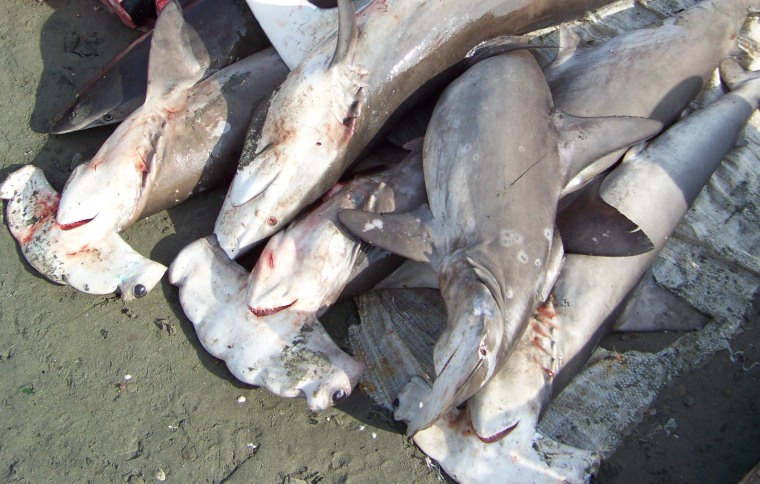For the first time, DNA tools have successfully pinpointed the geographic origin of shark fins sold dried in markets to satisfy the demand for shark fin soup, a Chinese delicacy.
Using CSI-like genetic methods, scientists have traced scalloped hammerhead shark fins from a burgeoning Hong Kong fish market to the sharks' original populations, some of which are endangered and located in waters thousands of miles away, according to a new study published in the journal Endangered Species Research.
"Shark fins are popular because serving fin soup at important events, such as weddings and banquets, is a sign of wealth and status," lead author Demian Chapman told Discovery News. "Think of it as a Lexus in a bowl."
Chapman, who is an assistant director at Stony Brook University's Institute for Ocean Conservation Science, and his colleagues analyzed mitochondrial DNA sequences, passed from mother to offspring, for 177 live scalloped hammerheads in the Western Atlantic. They also took fingernail-sized DNA samples from 62 shark fins of this species obtained at a Hong Kong fish market.
A comparison of the two sets of data, along with information from prior research, revealed that the market fins came from populations in the Atlantic and Indo-Pacific.
Twenty-one percent of the Hong Kong market fins were found to have originated in waters off of coastlines of the United States, Belize, Panama and Brazil in places where the shark has been categorized as endangered by the International Union for the Conservation of Nature.
Proposal plans
Armed with the new information, Chapman and others plan to propose at the March 2010 Convention on International Trade in Endangered SpeciesQatar that scalloped hammerheads should be listed under the organization's Appendix II, which would require permits for, and monitoring of, all trade in the species across international boundaries.
"We now show proof that scalloped hammerhead fins are in the trade and that some proportion of them come from regions where they have been documented to have severely declined," co-author Mahmood Shivji, director of Nova Southeastern University's Guy Harvey Research Institute, told Discovery News.
Shivji, who also works at the Save Our Seas Shark Center, added that this new proof should help get around objections "that there is no point in listing (the sharks) because they are hard to identify and their origin cannot be reliably traced once the fins are detached and in the market pipeline."
Highly sought after
Scalloped hammerhead fins are among the most sought after delicacies by cooks since they help to create a particularly thick, gelatinous soup. Just 2.2 pounds of the coveted fins can sell for $120 U.S. dollars in Asian markets.
"The premium prices commanded by fins have fueled a global shark hunt of epic proportion," said Ellen Pikitch, executive director of the Institute for Ocean Conservation Science, which funded a portion of the research.
"Earlier work found that up to 73 million sharks are killed annually to supply the fin markets, and approximately 1 (million) to 3 million are hammerheads," she added. "Inadequate protection, combined with inexorable pursuit, has placed many shark species at grave risk."
Educational campaigns in Asia about ecosystem threats posed by shark finning, such as announcements featuring basketball star Yao Ming, have had some effect, particularly on younger consumers. But, as Shivji said, "traditional cultures are very hard to change and that will take time."
Although time may be running out for depleted shark populations, Shivji said outright bans on the sale of the fins are thought to be unfeasible and politically impractical at this time.
"Sharks are the top predators of the ocean, and have been for hundreds of millions of years," Chapman concluded. "It would be a tragedy if humankind snuffs them out, especially if for nothing more than an overpriced bowl of soup."
